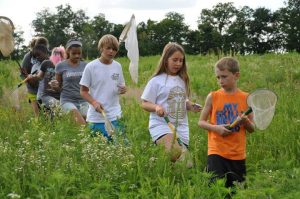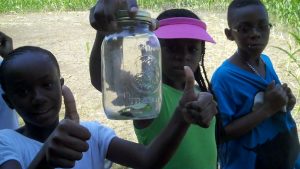 Programs for those with an affinity for nature, interest in exploration and STEM:
Programs for those with an affinity for nature, interest in exploration and STEM:
Ecology (1 hour)
Grades 3-6 – $5/student
Discover the 3 major habitats at Wildwood and make observations in each individual ecosystem. Learn about the importance of biodiversity and how humans impact the Wildwood ecosystems.
Aquatic Ecology (1 hour)
Grades 3-6 – $5/student
Build a pond and create your very own aquatic ecosystem that is rich in biodiversity. Students will make predictions and observations, collect data and display their findings in their artificially created pond.
Looking for more STEM? Contact us about setting up unique STEM learning experiences like hands-on Renewable Energy, Bioinspired Design, Advanced Aquatic Ecology, Meadow or Forest Ecology, Gardening or GPS programs.
Shoebox Ecology (preparing for a trip to Wildwood)
These activities will prepare students for ecology activities at Wildwood. Start with a shoebox or similar-size container and explain they are going to create “Ecology Capsules” to compare the ecosystem found at home with Wildwood’s ecosystem. Ask them to imagine they need to create a capsule that describes the ecosystem they are sampling well enough that someone who has never been to their community or never been to Wildwood would understand it.
Helpful definitions to share or review:
- Ecosystem: A community of organisms interacting with the environment.
- Biodiversity: A measure of the variety of different organisms found in an ecosystem.
Create your SCHOOL box: Brainstorm with the students a list of items to include in the box representing the ecosystem of your school. Then, have students divide up the responsibility of researching, collecting and preparing materials for the box. Consider the following possible items:
- Student written descriptions of the ecosystem.
- A collage of pictures of your local organisms taken by students or collected from media.
- Drawings students make of organisms.
- Representative natural objects such as tree leaves, nuts and cones, pressed flowers or rocks. (Use safe and legal methods for procuring natural objects.)
- News articles or current events related to the ecosystem near your school.
- Videos or sound clips of natural sounds.
- Descriptions of weather, smells, air quality, the night sky and noises.
 Create your WILDWOOD box: At Wildwood, ask students to create a box with similar types of items that represent the ecosystem at Wildwood. Divide up responsibilities for researching, collecting and preparing materials for the box. After returning to school, compare and contrast the two ecosystems based on the evidence in each “Ecology Capsule.”
Create your WILDWOOD box: At Wildwood, ask students to create a box with similar types of items that represent the ecosystem at Wildwood. Divide up responsibilities for researching, collecting and preparing materials for the box. After returning to school, compare and contrast the two ecosystems based on the evidence in each “Ecology Capsule.”
- What kinds of animals and plants live in both places?
- What lives only in the school ecosystem? Only in Wildwood’s ecosystem?
- What would happen if a certain plant or animal from one ecosystem were relocated into the other ecosystem?
- Which ecosystem had more variety? Why do you think so? What other evidence in your capsule supports your theory?
- Invite students to share their favorite part of the ecosystems they have explored by writing their impressions in creative ways or drawing pictures to illustrate their favorites.
- Students can share their findings with another class or invite others to view the contents of the capsules and share their insights from comparing and contrasting.
